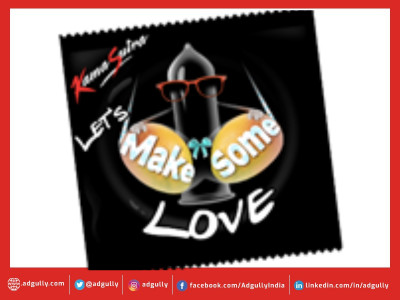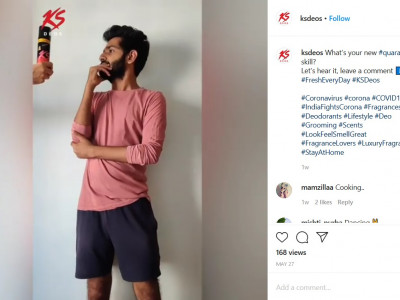Alyque Padamsee on the making of the first KamaSutra campaign
Condom brand KamaSutra is celebrating its Silver Jubilee this year. A pioneer in the condoms category, KamaSutra played a pivotal role in bringing sex out of the closet with the concept of ‘For the pleasure of making love’ in India around 25 years ago.
Launched in the year 1991, Brand KamaSutra was the brainchild of Gautam Hari Singhania, Chairman & MD, Raymond, and is reckoned till date for its bold and sensuous advertising campaigns. The first campaign, created by ad guru Alyque Padamsee, featured Pooja Bedi and Marc Robinson and created quite a stir in the market at that time.
Speaking about the journey of KamaSutra in India, Singhania shared, “Launching a condom brand 25 years back in a country like India was indeed a bold step that challenged the status quo then. Brand KamaSutra can now be termed as a revolution that changed the country’s perception of sex and taboo related to condoms. Having faced stiff resistance and weathered multiple controversies, brand KamaSutra till date has a top of the mind brand recall in the category and symbolises sex in true Indian context.”
On the making of the campaign, Alyque Padamsee said, “Conceptualising the KamaSutra campaign was a challenge during the early 90’s when condom ads weren’t as prevalent as they are today. Integrating condoms with pleasure was a Herculean task at a time when talking about condoms was a taboo and perceived as a means of family planning only.”
Adgully caught up with Alyque Padamsee at a recent event in Mumbai to know more about the making of the first KamaSutra campaign, the planning, the discussions, the bold concept and much more. Excerpts:
What went on in your mind while conceptualising the KamaSutra? How was the ad created?
It started with a Korean company that wanted to manufacture condoms in India, for which they tied up with the Raymond Group, and Gautam Hari Singhania approached me – at that time I was heading Lintas. He was impressed with the work that we had done for Park Avenue at that time and wanted to know if we could do a similar fabulous job for a condom brand. We gave it some deep thought and as per research reports found out that men saw condoms only as a means of family planning, they hated using them as they found them to be horribly made and a hindrance while having sex. Research showed that condom was the last thing they thought of when they wanted to have sex. So, I said to my team let us invent some sexy condom, let’s take a condom and make it sexy. That’s how we came up with the name KamaSutra and worked alongside Gautam’s technical team to design a varied range of condoms such as Ultra Thin, Dotted, and so on. Thus, the condom became a lifestyle product instead of just a functional product used for family planning.
Then we said with this sexy condom why not play up the love and sex angle? That’s how we coined the tagline: ‘For the pleasure of making love’. Thus we highlighted the pleasure part along with safety. Of course, we faced a lot of criticism for campaign and some newspapers even refused to carry the ad. I even remember someone in the Lok Sabha had asked the question on how such advertising could be allowed, that it was against Indian tradition to talk about sex so openly. The Advertising Standards Council of India (ASCI) called me, saying: ‘Mr Padamsee, you got a meeting today, will you please attend it. We are talking about banning the KamaSutra ad’. So, I went to the meeting and they all said: ‘Mr Padamsee, how can you say things like this in public? How can you say things like for the pleasure of making love?’
I replied that a condom is for making love and nothing else, or do you think it is for filling up with water and used as a water balloon during Holi! There was dead silence after that and finally the ASCI Chairman said, ‘Mr Padamsee, we will have a discussion and get back to you’. But they never got back to me and we continued the campaign. A condom is used while having sex, we put it in a polite way, saying ‘Making Love’.
The advertising budget for the campaign was small, but thanks to all the attention, within six months KamaSutra became a national brand. We didn’t have enough supply to cater to national demand. Basically, the supply was scattered around Mumbai, but demand came in from Delhi, Punjab – every place in the country wanted KamaSutra Condoms.
And as Pooja Bedi has mentioned, it opened people’s minds that there was nothing dirty about sex, it is a very human thing and there is no harm in talking about sex. The less you talk about it, the more rapes happen. The more you talk about it, the more prepared are woman; I mean the girl gets married at the age of 15, she doesn’t know what a ‘Suhaag Raat’ is, I mean they have heard about it but they don’t know what actually happens, and that is very, very unfortunate.
Were you banking on the Gold factor to catapult the brand into people’s minds?
Yes, definitely! We wanted to make KamaSutra a status symbol. In fact, I remember we had done a survey in several colleges and found out that girls would call the college guys who were handsome and had a good physique “The KS Guy’! It became another way of saying sexy; so instead of saying sexy, they would say KS guy.
Could you share something about the process of conceptualising and the creative ideation behind the campaign?
It was a long process, it didn’t happened overnight. Successful advertising always takes time, like anything else. This is not a 20:20 way of creating a brand, it is like a Test match and takes a long time. By getting to understand what a consumer wants and doesn’t want, you gradually arrive at the creative conclusion; which is what KamaSutra was, creating a conclusion with lots of thought process.
How were Marc Robinson and Pooja Bedi selected for this campaign?
Marc was actually selected by the photographer, Prabhu Das Gupta, and Gautam was clear that he wanted Pooja Bedi. We agreed on that, she was the perfect choice, so we needed a male model to match her. Marc was a very popular model at that time, the very top model.
Are you still involved in the brand communication for KamaSutra?
Not anymore. It was a Lintas brand for some years, and after I retired from Lintas, the brand also moved away to some another agency.
How do you think condom advertising has evolved in India? Are they still relying more on the boldness factor and the female model used rather than bringing a fresh and quirky angle to the communication?
I think KamaSutra started a trend of advertising that it was not afraid of sex. But I didn’t want a brand that was just sexy, I wanted a brand that had class. KamaSutra has that class, but today many agencies use sex just to sell anything, they use sex to sell a car, to sell a flat. I don’t believe in it. If you see Pooja Bedi in the ad, she is wearing a shirt that is buttoned almost to the top button. It was the expression on her face that we wanted to capture – that she is enjoying sex – and that is what people found to be very sexy. In actuality, we never showed a single inch of skin. The man was bare bodied, but Pooja was clothed.
Client Speak
Ranju Kumar Mohan, Director & Business Head, JK Ansell (a 50:50 joint venture between the Raymond Group and Ansell International)
What has been the growth of KamaSutra Condom brand in India in terms of revenue, market share and sales?
I can’t comment on the revenue, but we are the No. 2 brand in India overall and No. 1 in South India. In many other channels we are the No. 1 brand. The revenue is quite reasonable, and we have a reasonable share of the market.
How have you created a differentiation for the brand?
We have brought in a lot of path breaking products in the past, and we will keep doing that. For instance, in the last three years we have entered into a completely new sub-segment, called non-latex condom with Skyn. Recently, we have targeted and co-branded with MTV and launched a new condom range which is bi-flavoured, it is a first-of-its-kind product in the country. We are in a business where we have to create new concepts, new ideas and also new experiences for our consumers on a sustained basis.
How has the brand communication for KamaSutra evolved over the years?
We do use mainstream media, but our TV campaigns are not carried by all media houses, hence we use a mix of digital and target segments in the right way where the consumers are. Therefore, we create stories for our digital campaigns, which have helped us in engaging the consumers. We also do targeted print campaigns, and I think that is what has made our brand successful today.
Do you think the usage and purchase of condom in India is still hampered by the hesitation and a feeling of embarrassment, even amongst the millennials?
I think it’s not so much among the millennials and in the urban cities, but in the context of semi-urban and rural areas, it is still the challenge. So, there is still the need to educate them and it’s an ongoing process. We have seen a shift in last three years, but maybe it will require some more time.
















Share
Facebook
YouTube
Tweet
Twitter
LinkedIn